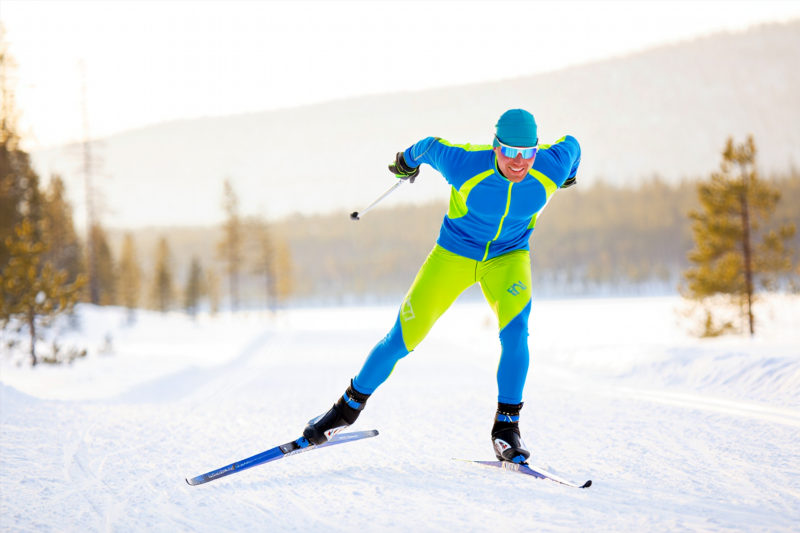Unlock Your Potential on the Snow by Enhancing Flexibility and Mobility
Cross-country skiing is a demanding sport that combines endurance, strength, and technique. One often overlooked aspect that can significantly elevate your performance and safety is flexibility and mobility. Improving these areas helps you move more efficiently, maintain better form, and prevent injuries—allowing you to experience the full joy of winter trails.
In this article, we’ll explore the importance of flexibility and mobility for skiers, share expert tips, and provide actionable strategies to help you refine your movement and boost your overall skiing performance.
Why Flexibility and Mobility Matter for Cross-Country Skiers
The Role of Flexibility in Skiing
Flexibility refers to the range of motion available in your joints and muscles. For cross-country skiers, this translates to:
- Enhanced stride length and power.
- Better balance on uneven terrain.
- Reduced muscle tension, leading to smoother movements.
The Importance of Mobility
Mobility involves the ability to move freely and efficiently within your joints. Good mobility:
- Enables precise and controlled movements.
- Reduces compensatory patterns that can lead to overuse injuries.
- Allows quick adjustments during dynamic skiing conditions.
Together, flexibility and mobility form the foundation for optimal technique and injury prevention—especially during long sessions or intense races.
The Impact of Poor Flexibility and Limited Mobility
Ignoring these aspects can result in:
- Stiffness and restricted motion that hampers technique.
- Increased fatigue due to inefficient movement.
- Higher risk of strains, pulls, or overuse injuries—such as lower back pain or knee troubles.
- Reduced enjoyment of winter fitness and racing experiences.
Investing time in improving your flexibility and mobility translates directly into more enjoyable, effective, and safer skiing.
Expert Tips to Enhance Flexibility and Mobility for Skiers
1. Incorporate Dynamic Warm-Ups
Dynamic stretching prepares your muscles and joints for activity. Before hitting the trails, try:
- Leg swings (forward and side-to-side).
- Arm circles.
- Hip circles.
- Walking lunges with torso twists.
Why? Dynamic movements increase blood flow and prepare your body for the demands of skiing.
2. Focus on Specific Flexibility Exercises
Target key muscle groups used in skiing:
| Muscle Group | Stretching Exercise | Benefits |
| Hamstrings | Seated Forward Bend | Improves leg extension and stride length |
| Hip Flexors | Kneeling Hip Flexor Stretch | Enhances stride propulsion |
| Quadriceps | Standing Quad Stretch | Supports powerful leg push-offs |
| Lower Back | Child’s Pose | Reduces lumbar tension post-skiing |
3. Develop a Mobility Routine
Mobility drills help maintain joint health and movement efficiency:
- Thoracic Spine Rotations: Improve upper body twist, necessary for pole planting.
- Ankle Circles: Boost ankle flexibility for better glide.
- Hip Openers: Deep lunges or pigeon pose facilitate hip mobility.
4. Integrate Yoga and Pilates
Both practices improve overall flexibility, balance, and core stability—integral components of effective skiing technique.
5. Consistency and Gradual Progression
Enhance flexibility and mobility over time:
- Aim for daily short sessions (10-15 minutes).
- Progress slowly to avoid overstretching or injury.
- Incorporate these routines into your off-season training for sustained benefits.
How Flexibility and Mobility Enhance Skiing Performance
| Benefit | Explanation | Impact on Skiing |
| Improved Range of Motion | Allows longer, more fluid strokes | Increased efficiency and endurance |
| Better Balance and Stability | Enhances control on uneven snow | Improved technique and safety |
| Faster Recovery | Reduces muscle soreness | More frequent and longer ski sessions |
| Injury Prevention | Less strain on joints and muscles | Continued progress and enjoyment |
Frequently Asked Questions (FAQs)
How often should I stretch to see improvements?
Ideally, incorporate flexibility and mobility exercises daily or at least 3-4 times per week. Consistency is key to developing lasting improvements.
When is the best time to stretch—before or after skiing?
*Dynamic stretching* should be done before skiing as part of your warm-up, while *static stretching* is best after activity to promote recovery.
Can flexibility training replace strength training for skiers?
Not entirely. Flexibility and mobility exercises complement strength training; both are essential for peak performance and injury prevention.
What if I have existing injuries or limited mobility?
Consult with a healthcare professional or physical therapist before starting new routines. They can tailor exercises to your needs and ensure safe progression.
Final Thoughts: Embrace Flexibility for Peak Performance
Improving flexibility and mobility isn’t just about touching toes or stretching lazily—it’s a strategic move to elevate your skiing. Better movement efficiency reduces fatigue, enhances technique, and guards against injuries—allowing you to enjoy a more vigorous and pain-free experience on the snow.
Start integrating expert-recommended routines today, and experience the difference in your cross-country skiing performance with enhanced movement fluidity and confidence. Whether you’re mastering winter fitness or competing at higher levels, flexible and mobile muscles are your secret allies.
Take Action Now
Ready to boost your skiing performance? Download our free Flexibility & Mobility Workout Plan designed specifically for skiers, and begin transforming your snow adventures today!
*Experience the freedom of fluid movement—your snow trails await.*
